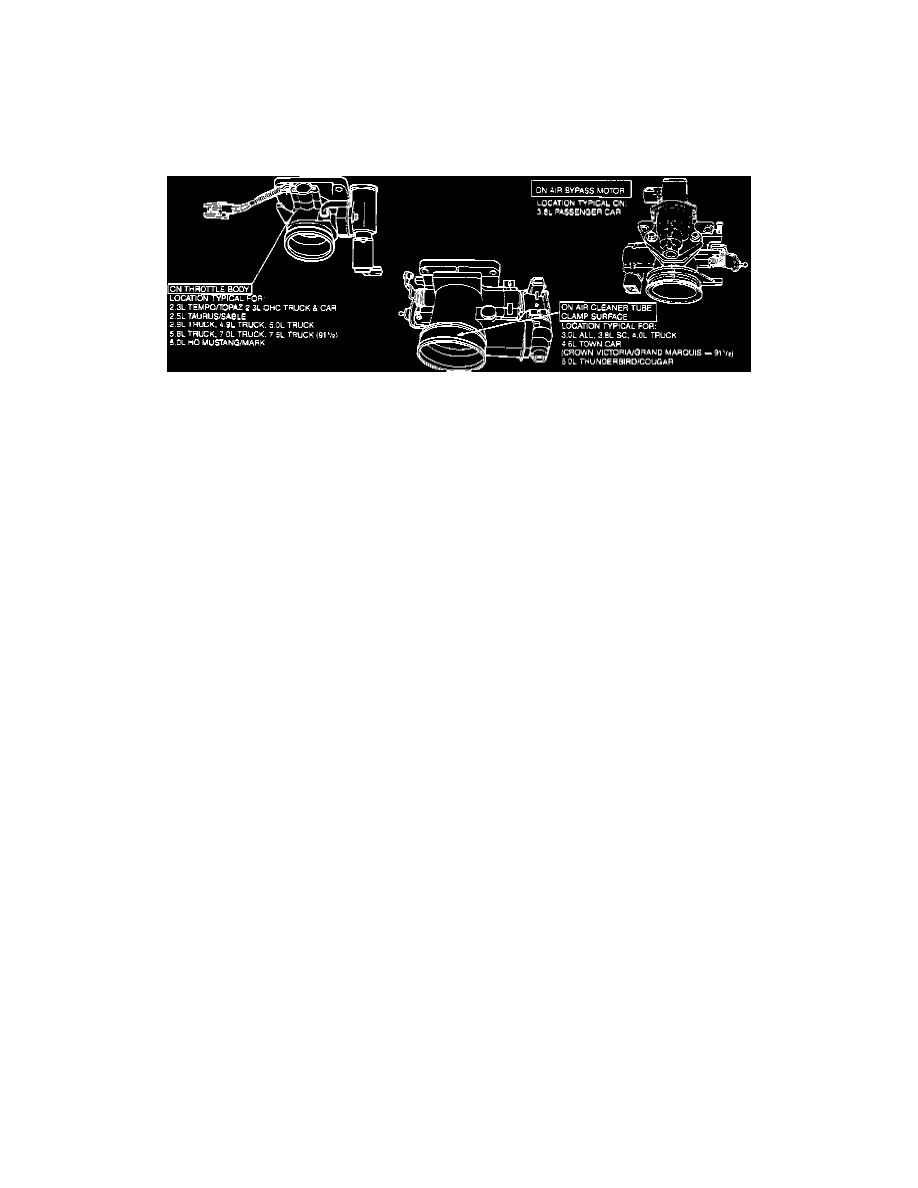Aerostar AWD V6-183 3.0L (1991)

Idle Speed: Adjustments
NOTE: The curb and fast idle speeds are controlled by the Engine Control Assembly (ECA) and the Idle Speed Control Bypass Air Valve (ISC-BPA).
The ISC-BPA valve is not adjustable. A large increase or decrease in closed plate airflow from the calibrated level will not allow this device to control
the speed.
The idle speed setting procedure has been revised considerably to reflect the expanded application of the Self-Test idle speed options and because the
throttle body incorporates an orifice in the throttle plate to control idle airflow as part of the sludge tolerant design.
Service Decal Location (Typical Throttle Body)
Throttle bodies with sludge tolerant design (introduced 1991 1/2 model vehicles) are clearly identified with a Yellow/Black decal. This decal warns that
the throttle plate stop screw must not be adjusted counterclockwise (backed off), as this will not reduce the engine speed but may cause the throttle plate
to stick in the bore. Backing out the screw may be required if the throttle body has been previously serviced (a plug in the throttle plate orifice may be
present) or the plate stop screw tampered with (TPS Self-Test output out of range). The decal also warns that the throttle body must NOT be cleaned
inside the bore, as this cleaning will impair the sensitive coating. The sludge accumulation will not affect the idle air flow. The cleaning procedure for the
ISC-BPA still applies.
REMEMBER
A change in idle airflow can occur not only at the throttle body but other areas as well. You should enter the idle speed procedure only after other
possible causes in the following areas are eliminated.
^
Contamination within the idle speed control device
^
Lack of fuel system control (excessively rich or lean)
^
Throttle sticking or binding
^
Engine not reaching operating temperature
^
Incorrect ignition timing
^
Incorrect or clogged PCV system
^
Vacuum leaks (intake manifold, vacuum hoses, vacuum reservoirs, power brake booster etc.
VERIFY
^
Transmission is in PARK (A/T), or NEUTRAL (M/T)
^
Parking brake is applied (automatic brake disconnected where applicable)
^
Wheels blocked
^
Engine at operating temperature
^
Proper fuel pressure and no exhaust smoke
^
Correct and clean PCV system
^
Heater, A/C, and other accessories OFF
^
Ignition timing is set to specification
^
EEC-IV diagnostics have been performed and vehicle malfunction indicated service output codes have been resolved.
STEP 1
With the engine OFF, connect a tachometer, according to manufacturer's instructions, disconnect the negative (-) terminal of the battery for 5
minutes, then reconnect it.
STEP 2
START the engine and stabilize for two minutes, then goose the engine and let it return to idle, lightly depress and release the accelerator and let
engine idle.
STEP 3
If the engine is not idling properly, turn the engine OFF, and disconnect Idle Speed Control Air Bypass Solenoid.
STEP 4
START and RUN the engine at 2500 rpm for 30 seconds.
STEP 5
Place the transmission in PARK (A/T), or NEUTRAL (M/T).
